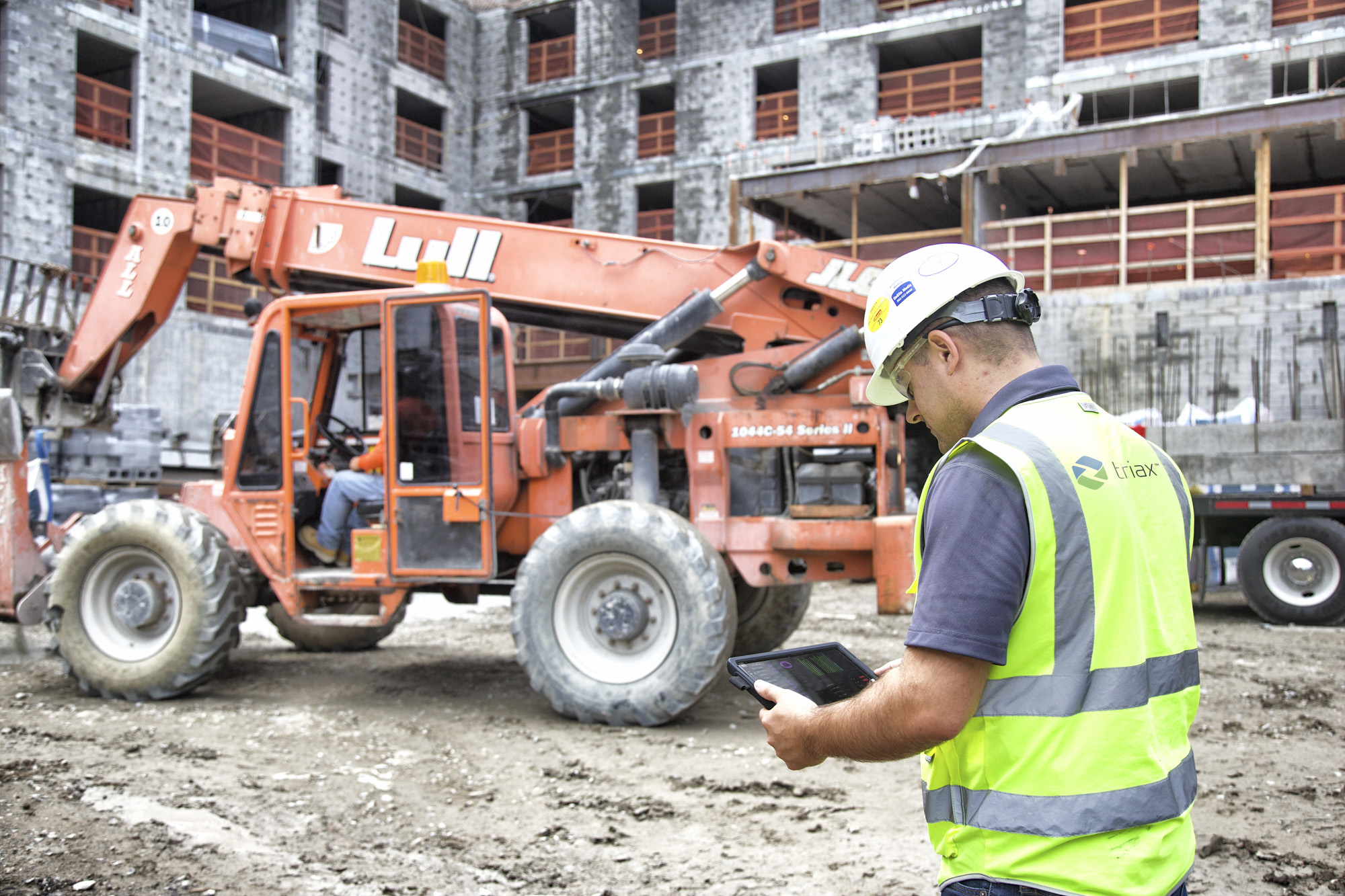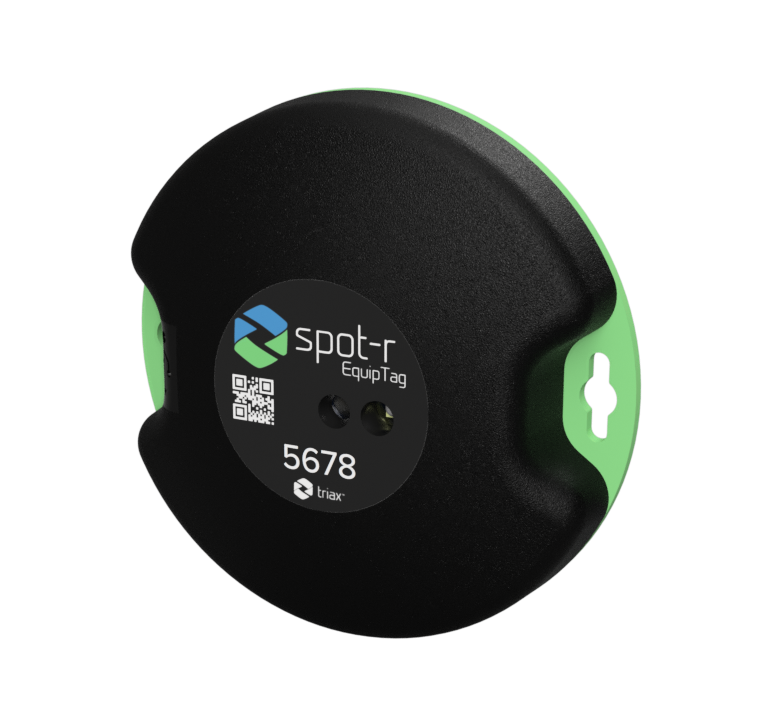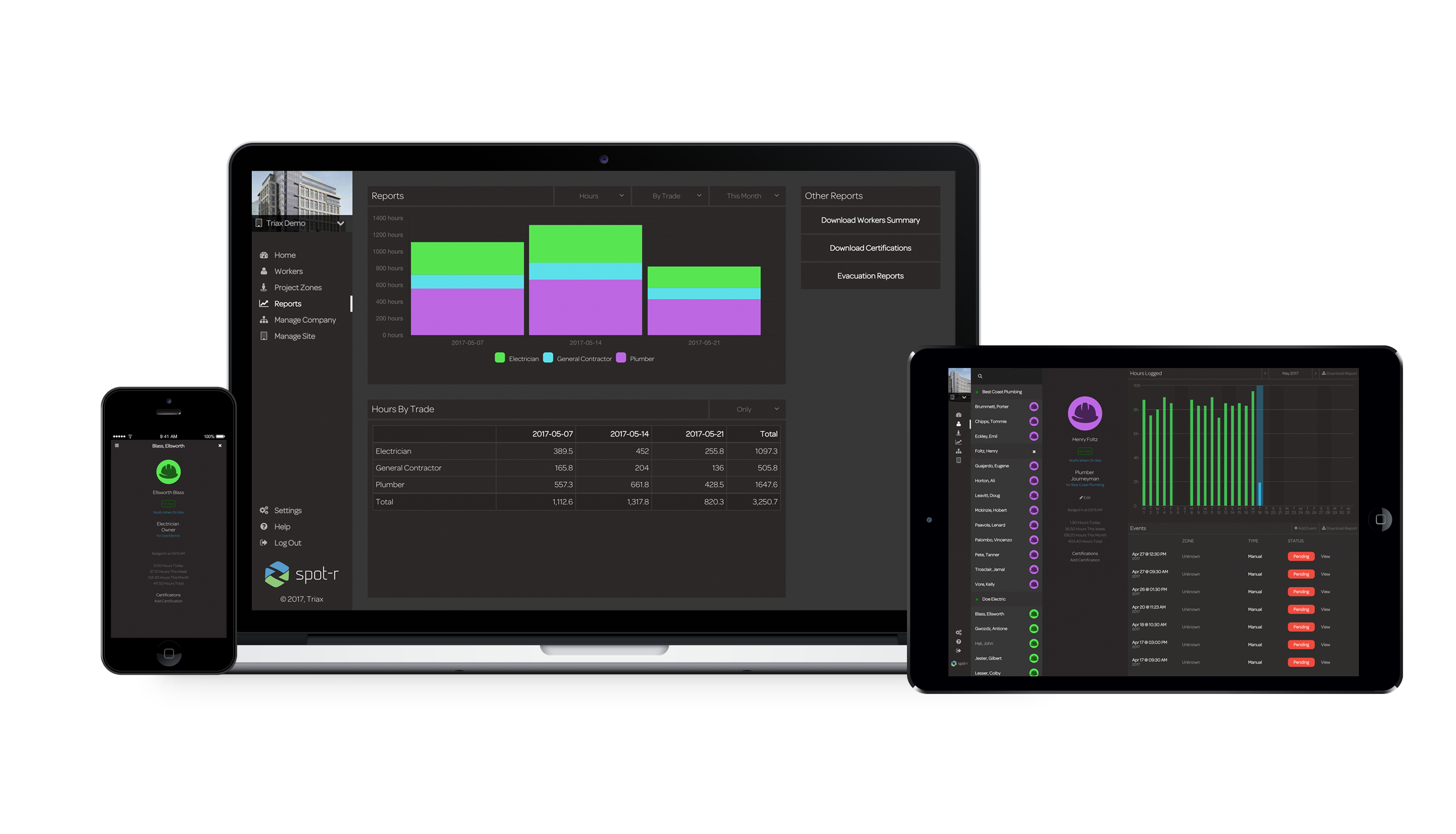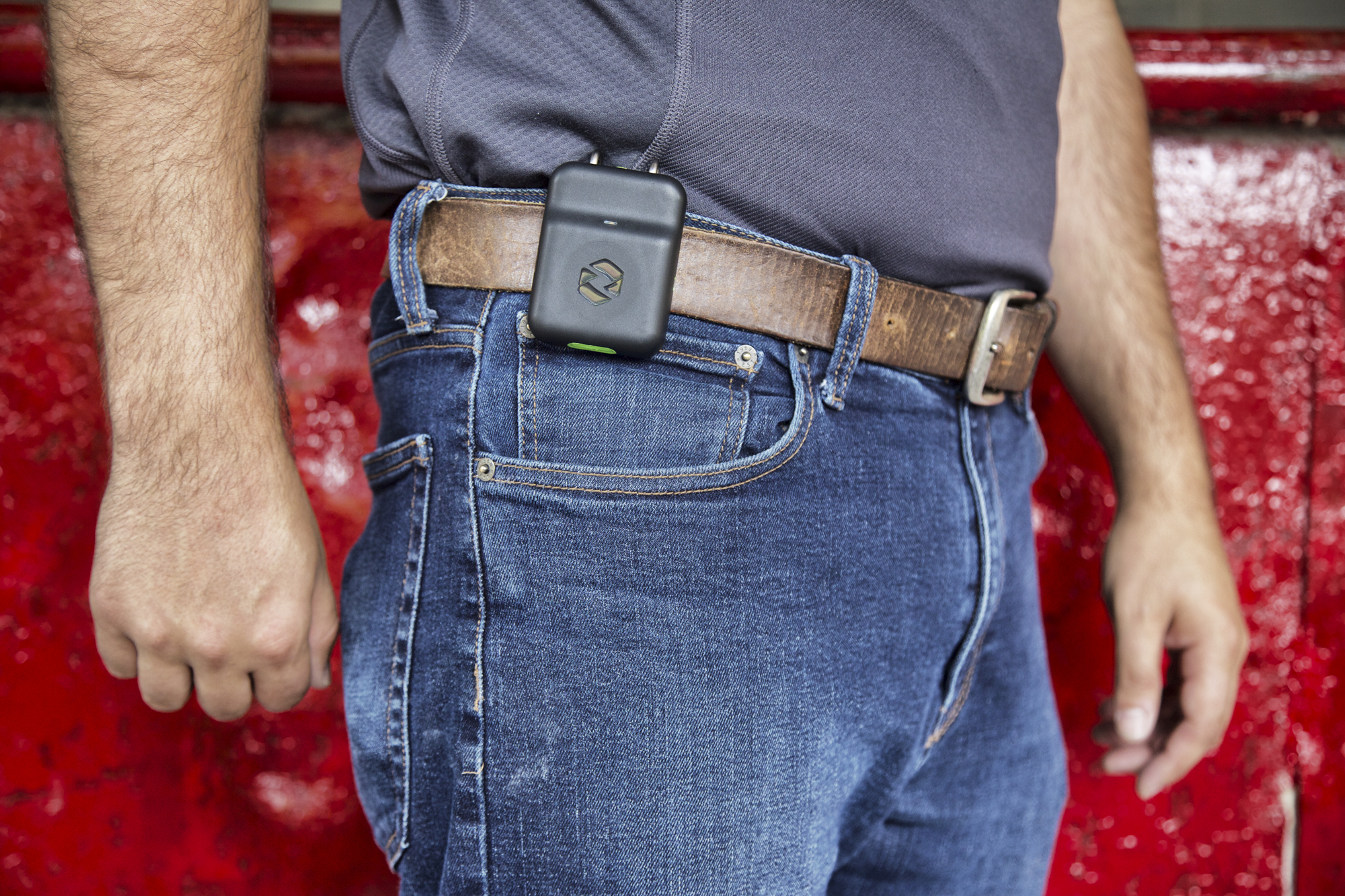
We recently caught up with Triax Technologies, a company we’ve previously featured on BuiltWorlds, at Autodesk University (AU) 2017. The Norwalk, Connecticut-based tech company, which builds and manufactures hardware that links to its on-site mesh network, announced an addition to their product line at the event.
You might be most familiar with Triax’s Spot-r Clip, a sensor that gives automatic slip/trip and fall alerts supplemented with a worker push-button feature in case of another accident or issue. The hardware clips to a worker’s belt and reports each individual’s time on site and location in real time.
Now, the Clip is being paired with the brand-new Spot-r EquipTag. About the size of a cookie, the EquipTag attaches to any piece of equipment, enabling contractors to see in real-time where their equipment is, who’s using it, and whether they are authorized to do so. If unauthorized or unknown personnel are detected inside the equipment cab, foremen receive an alert.
“This came about as a safety system,” says Pete Schermerhorn, President and Chief Operating Officer. “It gives instant notification of workers in distress and ensures that equipment is being operated by certified workers.”

Currently, the EquipTag is being tested on several construction sites, with an anticipated market release in early 2018. The launch will also expand capabilities for existing Clip users. “It’s one integrated system which relies on our network, which is the IoT backbone for construction sites,” says Schermerhorn.
Used on jobs ranging from remodeling projects to skyscrapers, their proprietary network connects workers, equipment, and safety on a construction site to give what the company calls “total digital visibility.”
“Our network establishes a platform to which you can add nodes and sensors to build a rich array of real time data,” Schermerhorn explains. The cloud-based data streams create a history of the project’s workflow. Managers can also access personnel and equipment stats, in addition to identifying workers in each trade, their location, their hours, and what equipment they’re using.
Unlike many sensor solutions, Triax’s platform does not use GPS. The technology breaks up a jobsite into manageable zones, with the 900 MHz based network gathering and transmitting data from the sensor devices to the network hardware, or pods, placed around the site. These pods link through a cellular network to the cloud, where the data appears in a “dashboard” accessible by any internet-connected device.

Triax’s plans go beyond its products
According to Schermerhorn, their system is the core of a much broader and growing movement to collect and harness construction’s rich, untapped data. Construction, he believes, can — and will — achieve the productivity gains of other industries, but only with technology and digitization, which is just now being put into place.
“Part of the problem has been getting the tech industry to focus on construction,” he says. “But there’s been a recent influx of construction tech start-ups created with the sole purpose of propelling digitization in construction, and contractors are responding by putting construction technology into their growth plans.”
Schermerhorn considers Triax on the leading edge of this development. “The amount of previously unavailable data that we’re now gathering for construction site productivity gains is incredible,” he says.
What’s next for Triax
Looking ahead, Schermerhorn says the Triax network will serve as a hub that integrates with numerous devices to provide a rich data stream for construction management platforms. Today, the system integrates with construction management programs such as Procore and Autodesk.
Future integrations, for example, could include hand tools that are connected via Bluetooth and other network protocols to offer measures of productivity at very fine scale. Materials could also be integrated into the network.
Schermerhorn enthusiastically gives examples of how the platform can, and indeed already is, providing highly useful and actionable data. Although it gives managers useful information in the aggregate, with productivity measures for trades and locations on a site, it also goes down to the individual. For example, managers can see what a plumber or electrician was working with on the 17th floor for 36 hours last week.

“Now you know who’s operating every scissor lift,” he says. “You know when that worker got to the site, where he or she spent time, and equipment used.”
All this data is collected over time and can be leveraged to offer historical insights that help managers determine how efficiently personnel and equipment are now being used when compared to past projects. This, in turn, can help them determine the workforce composition and size, and amount of equipment needed, in the next phase or on a future project.
This information is especially relevant in the industry’s current landscape with a tight workforce and tough margins. As is often discussed, the construction industry must become more efficient to meet the enormous demand for more infrastructure and construction of buildings and cities worldwide.
Schermerhorn believes the key will be more actionable data. “The need is for access to datasets, but the network and hardware makes that data collection possible. We’re connecting the jobsite in a scalable, cost effective way.”

Discussion
Be the first to leave a comment.
You must be a member of the BuiltWorlds community to join the discussion.